News

Clearing up Common Misconceptions about Beard Care
Beards have become a popular trend amongst men over the years. However, with its increasing popularity, many myths and misconceptions have arisen about beard care. Let us debunk some of the most common myths about beard care.
Myth #1: Shaving Makes Your Beard Grow Faster
One of the most common myths surrounding beard care is that shaving will make your beard grow faster. However, this is simply not true. Shaving does not affect the rate at which your hair grows. The rate of hair growth is determined by genetics and hormones.
Myth #2: You Can’t Grow a Beard If Your Father Doesn’t Have One
Another common misconception is that if your father cannot grow a beard, you will not be able to grow one either. While genetics do play a role in beard growth, they are not the only determining factor. Hormones, diet, and lifestyle also play a significant role.
Myth #3: You Should Wash Your Beard Every Day
It is a common belief that you should wash your beard every day. However, washing it too frequently can actually be harmful. Overwashing can strip the natural oils from your beard, leaving it dry and brittle. It is recommended that you wash it 2-3 times a week using a beard-specific shampoo or conditioner.
Myth #4: You Need to Use Beard Oil to Grow a Healthy Beard
Many people believe that using beard oil is necessary for a healthy beard. While it can be beneficial for softening and conditioning your beard, it is not necessary for growing facial hair. Beard growth is primarily determined by genetics and hormones. However, using the said oil can help prevent dryness and breakage, leading to a healthier-looking beard.
Myth #5: Minoxidil Is the Only Way to Grow a Thicker Beard
Minoxidil is a medication that is commonly used to treat hair loss. While it can be effective in growing facial hair, it is not the only way to grow a thicker beard. A healthy diet, lifestyle changes, and using natural beard growth products can also help promote beard growth.
Tips for Growing a Healthy Beard
Now that we have debunked some of the most common myths about beard care, let's take a look at some tips for growing a healthy beard.
- Eating a healthy diet rich in vitamins and minerals can promote healthy beard growth. Foods high in protein, zinc, and vitamin C are particularly beneficial.
- Exercise can help improve circulation, which can promote healthy facial hair. It can also help to reduce stress, which can contribute to hair loss.
- There are many natural products available that can help promote healthy beard growth. Look for products that contain ingredients such as biotin, saw palmetto, and argan oil.
- Growing a healthy beard takes time and patience. It can take several weeks or even months for your beard to grow. Be patient and stick with it.
Conclusion
There are many myths and misconceptions surrounding beard care. Shaving does not make your beard grow faster, genetics are not the only determining factor in beard growth, and washing your beard too frequently can be harmful. Additionally, using beard oil is not necessary for beard growth, and Minoxidil is not the only way to grow a thicker beard. By following a healthy diet, exercising regularly, using natural beard growth products, and being patient, you can promote healthy growth and achieve the beard of your dreams.
Looking to grow a thicker beard? Look no further than Tugain 10! Our beard growth products, including Minoxidil and Tugain, are designed to promote healthy beard growth. Try Tugain 10 today and start seeing results!
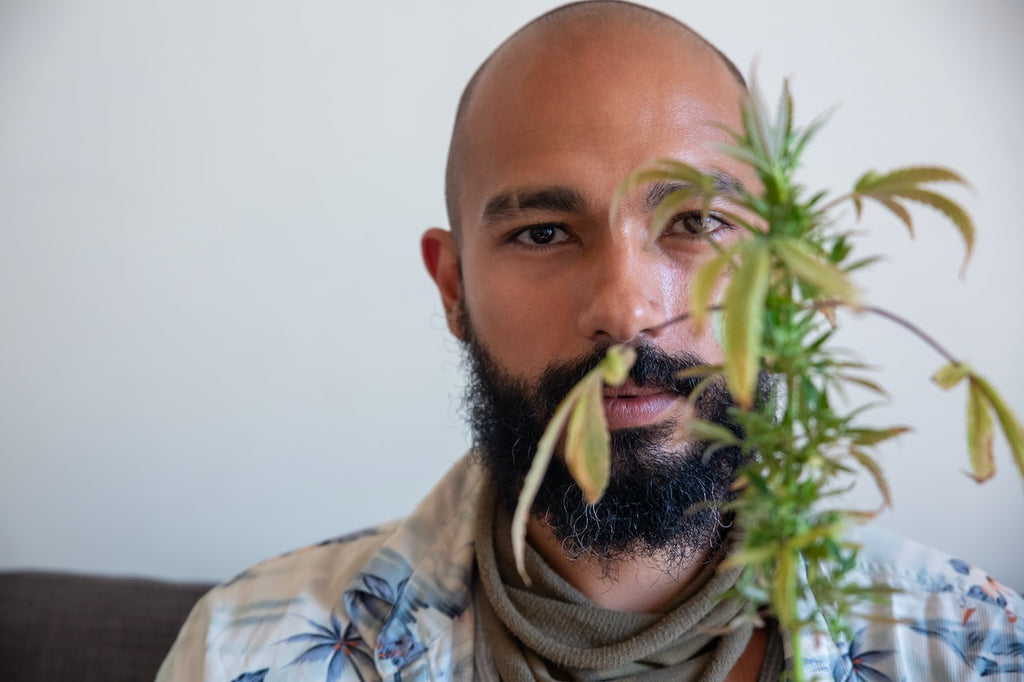
The Timeline of Minoxidil: When to Expect Results
Minoxidil is a popular medication used to treat hair loss. It is available in over-the-counter and prescription forms and is applied topically to the scalp. One common question about minoxidil is how long it takes to work. In this article, we will explore the answer to this question and provide some tips for using minoxidil effectively.
How Minoxidil Works
Before we discuss how long it takes minoxidil to work, it's important to understand how the medication works. Minoxidil is a vasodilator which widens blood vessels and improves blood flow to the scalp. This increased blood flow can help to stimulate hair growth and prevent further hair loss.
Minoxidil is also thought to prolong the anagen phase of hair growth, which is the active growth phase of the hair cycle. Keeping hair in the anagen phase for longer, minoxidil may help to produce thicker, fuller hair over time.
How Long Does Minoxidil Take to Work?
The answer to the question of how long it takes for minoxidil to work can vary depending on several factors. Here are some of the most important ones:
- Severity of Hair Loss: Minoxidil works best for individuals with mild to moderate hair loss. If you have more advanced hair loss, you may need to use minoxidil longer to see results.
- Consistency of Use: To be effective, minoxidil must be used consistently. This means applying it to the scalp twice daily, every day. If you miss applications or use less than the recommended amount, it may take longer to see results.
- Individual Response: Everyone's body is different; some people may respond more quickly to minoxidil than others. Some individuals may start to see results within a few weeks, while others may need to use minoxidil for several months before noticing a difference.
Based on these factors, it's generally recommended that individuals use minoxidil for at least 4-6 months before expecting to see results. This timeframe allows for the medication to take effect and for hair to grow through a full cycle.
Tips for Using Minoxidil Effectively
If you are using minoxidil to treat hair loss, there are several tips you can follow to help maximize its effectiveness:
- Use the Right Amount: Apply the recommended amount of minoxidil to your scalp. Using too little may not be effective while using too much can cause side effects.
- Apply it Correctly: When applying minoxidil, ensure to part your hair and apply it directly to the scalp. Avoid getting it on your hair, as this can cause it to become greasy or clumpy.
- Be Consistent: To see results, it's important to use minoxidil consistently. Try to apply it simultaneously every day, and don't skip applications.
- Be Patient: Minoxidil takes time to work, so it's essential to be patient and stick with the treatment. It may take several months to see results, so don't get discouraged if you don't see a difference right away.
- Consider Combining with Other Treatments: Minoxidil can be used with other hair loss treatments, such as finasteride or hair transplant surgery, for more significant results. Talk to your doctor about the best treatment plan for your hair loss.
The Bottom Line
Minoxidil is a popular medication used to treat hair loss, but it can take time to see results. By understanding how the medication works, how long it takes to work, and how to use it effectively, you can maximize its effectiveness and achieve the best possible results. Remember to be patient, consistent, and follow the recommended usage guidelines for the best chance of success.
Are you looking for Minoxidil? Tugain 10 offers effective, safe, and high-quality Minoxidil. Shop now.
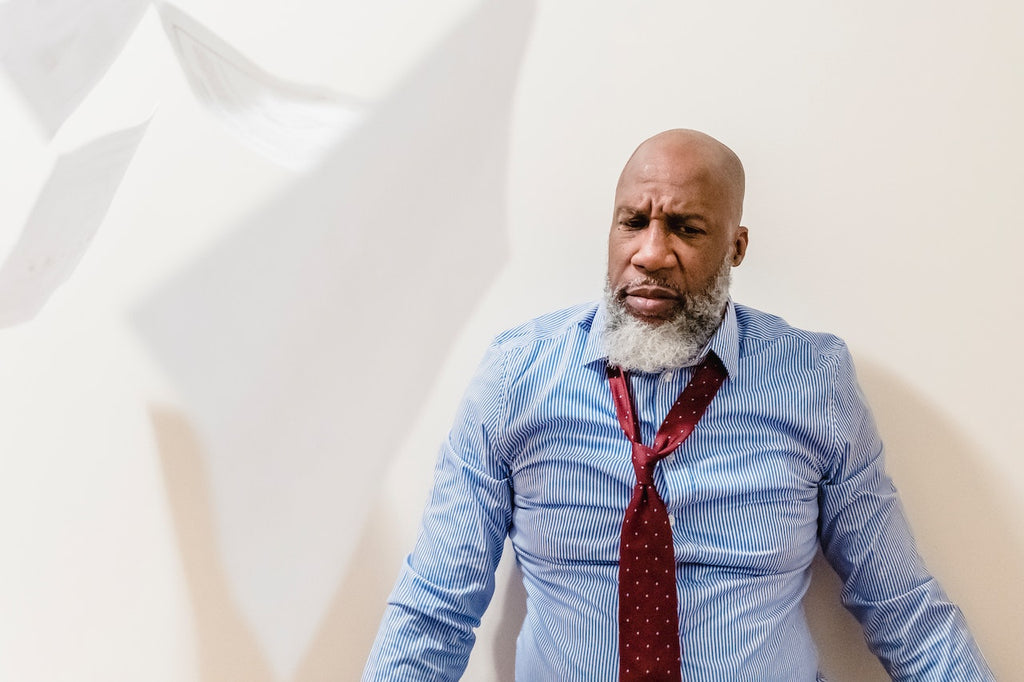
Understanding Hair Loss: Average Age, Types, and Causes
As we age, our bodies undergo many changes. One of the most common changes is hair loss. Hair loss is a natural part of the aging process, and it affects both men and women.
However, the age at which hair loss begins can vary from person to person. In this article, we will explore the average age of hair loss and what causes it.
What Is Hair Loss?
Hair loss, also known as alopecia, is the thinning or loss of hair from the scalp or other areas of the body. It can be caused by various factors, including genetics, hormonal changes, stress, and medical conditions.
The Average Age of Hair Loss
The average hair loss age varies depending on several factors, including gender, genetics, and lifestyle. For men, hair loss typically begins in their 20s or 30s and progresses as they age. By the age of 50, over 50% of men will have some form of hair loss. Women, on the other hand, typically experience hair loss later in life, usually in their 40s or 50s.
Genetics is a significant factor in determining the age at which hair loss begins. If your parents or grandparents experienced hair loss at a young age, you are also more likely to experience it. Lifestyle choices such as smoking, excessive alcohol consumption, and poor diet can also contribute to hair loss at an earlier age.
Types of Hair Loss
There are several types of hair loss, each with its own causes and patterns. The most common types of hair loss include:
- Male Pattern Baldness: The most common type of hair loss in men, male pattern baldness is caused by genetics and hormone levels. It typically begins with a receding hairline and thinning at the crown.
- Female Pattern Baldness: This is similar to male pattern baldness but occurs in women. It typically results in thinning hair on the top of the head.
- Telogen Effluvium: This hair loss is caused by stress, illness, or medication. It results in excessive shedding of hair from all over the scalp.
- Alopecia Areata: This is caused by an autoimmune disorder that attacks hair follicles. It results in patchy hair loss on the scalp or other areas of the body.
What Causes Hair Loss?
Hair loss can be caused by several factors, including genetics, hormonal changes, stress, and medical conditions. Male pattern baldness is caused by genetics and hormone levels, while female pattern baldness is also influenced by genetics but is more commonly caused by hormonal changes during menopause.
Stress can also contribute to hair loss, especially if it is chronic. Medical conditions such as thyroid problems and autoimmune disorders can also cause hair loss.
How to Treat Hair Loss
Several treatments are available for hair loss, including medication, surgery, and hair restoration procedures. Medications such as finasteride and minoxidil can sometimes help slow down or reverse hair loss. Surgery, such as a hair transplant, can also be an effective treatment option for some people.
Hair restoration procedures such as scalp micropigmentation and hair fibers can also be used to conceal hair loss and give the appearance of thicker hair.
Conclusion
The average age of hair loss varies depending on several factors, including genetics, gender, and lifestyle. While hair loss is a natural part of aging, effective treatments are available. If you are experiencing hair loss, it is essential to speak to a healthcare professional to determine the underlying cause and the best course of treatment.
Buy quality minoxidil to treat hair loss from Tugain 10. You can count on us for safe and effective hair loss treatments that can help you restore your hair and improve your confidence. Don't let hair loss hold you back – take action today and start on the path to healthier, fuller hair.
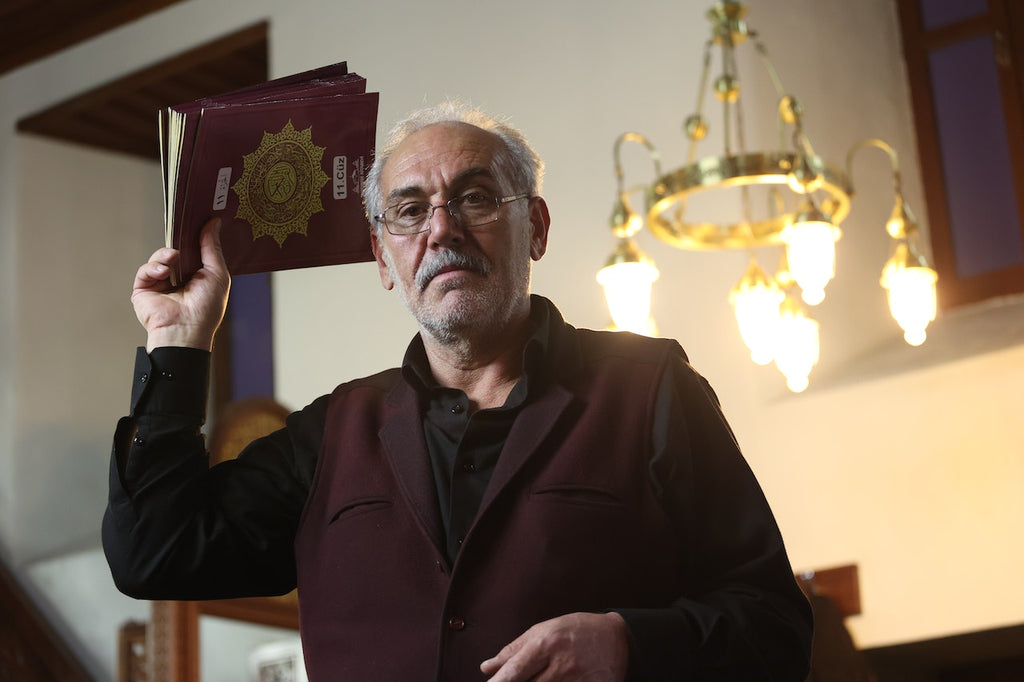
Beard Hair Loss: Common Causes and Prevention Tips
Beards have become a popular trend recently, with many people preferring to grow them as a sign of masculinity, maturity, and fashion. However, one of the major concerns for beard growers is hair loss.
It can be a frustrating experience for many individuals to see their beard hair falling out, mainly if they have spent many months cultivating it. In this article, we will explore the reasons behind beard hair loss and what you can do to prevent it.
Genetics
Genetics plays an essential role in determining your beard hair growth pattern. Some men are blessed with thick, bushy beards that proliferate and require minimal maintenance, while others struggle to grow even small patches of hair. If your father or grandfather had a patchy beard or experienced hair loss, there is a high chance that you may experience the same problem.
Hormonal Imbalances
Hormonal imbalances can also cause beard hair loss. Testosterone is the primary hormone responsible for male hair growth. However, when the body produces too much of a hormone called dihydrotestosterone (DHT), it can cause hair follicles to shrink, leading to hair loss. This condition is known as Androgenetic Alopecia or male pattern baldness. While this condition is often associated with scalp hair loss, it can also affect beard hair.
Stress
Stress is another factor that can contribute to beard hair loss. When stressed, your body produces cortisol, interfering with average hair growth. Stress can also lead to poor lifestyle habits, such as lack of sleep, poor diet, and smoking, contributing to hair loss.
Nutritional Deficiencies
A healthy diet is essential for hair growth; lacking certain nutrients can cause hair loss. Iron, zinc, and biotin are necessary for healthy hair growth; a deficiency in these nutrients can cause beard hair loss. A diet lacking in protein can also lead to hair thinning and hair loss.
Autoimmune Disorders
In some cases, beard hair loss can be caused by autoimmune disorders. The body's immune system attacks hair follicles due to diseases, including lupus and alopecia areata, which result in hair loss. These conditions can affect not only the scalp but also the beard hair.
Medical Treatments
Specific medical treatments can also cause beard hair loss. Chemotherapy, for example, targets rapidly dividing cells, which include hair follicles. While hair loss is often temporary, it can take several months to grow back. Similarly, radiation therapy can also cause hair loss in the treated area.
Infections
Infections can also cause beard hair loss. Fungal infections like ringworm can affect the beard area, leading to hair loss. Bacterial infections can also cause folliculitis, a condition characterized by inflammation of the hair follicles, leading to hair loss.
Prevention and Treatment
Preventing beard hair loss requires a holistic approach to overall health and lifestyle habits. Here are some tips to help you keep your beard hair healthy and strong:
- Eat a healthy protein, iron, zinc, and biotin diet. Foods such as eggs, nuts, and leafy greens are excellent sources of these nutrients.
- Manage stress through exercise, meditation, or other relaxation techniques.
- Avoid smoking, which can contribute to hair loss.
- Practice good hygiene to prevent infections that can cause hair loss.
- Use gentle beard products without harsh chemicals that can damage hair follicles.
- Consult a dermatologist or healthcare provider if you experience sudden or severe hair loss.
Minoxidil for Beard
Minoxidil is a drug commonly used to treat hair loss but is gaining popularity as an alternative for achieving a thicker beard. Minoxidil for beard growth is a topical solution that is applied directly to the skin of the face. It is thought to stimulate hair follicles and help them to grow thicker and fuller beards.
Minoxidil is a popular choice for beard growth because it is relatively safe and effective. It is available over the counter, so it doesn’t require a prescription. Many men have experienced success with minoxidil for beard growth, with some seeing results in as little as two weeks.
The recommended dosage of minoxidil for beard growth is 2-4 mL twice a day. It is essential to apply the solution evenly using the dropper provided in the package. It should be applied to the face area where you want to grow your beard. It is crucial to start with a low dose of minoxidil and gradually increase it because this medication can potentially irritate the skin.
Conclusion
Beard hair loss can be a frustrating experience, but understanding the underlying causes can help you take preventive measures to keep your facial hair healthy and strong. You can maintain a healthy and attractive beard by adopting healthy lifestyle habits and seeking medical attention when necessary.
Buy quality minoxidil for beard growth to treat hair loss from Tugain 10. You can count on us for safe and effective hair loss treatments that can help you restore your hair and improve your confidence. Don't let hair loss hold you back–take action today and start on the path to healthier, fuller hair. Buy today!

The Science behind Minoxidil and Its Effectiveness for Beard Growth
Beards are a symbol of masculinity and have been in vogue for centuries. However, not all men are blessed with a full and thick beard. If you're someone who has struggled to grow a beard, you may have come across Minoxidil. Minoxidil is a popular hair growth solution that promises to help you grow a fuller and thicker beard. But does it really work? In this article, we'll take a closer look at Minoxidil and its effectiveness in promoting beard growth.
What Is Minoxidil?
Minoxidil is a topical solution initially used to treat high blood pressure. However, researchers discovered it had an unexpected side effect—stimulating hair growth. Minoxidil widens blood vessels and increases blood flow to the hair follicles. This increased blood flow provides more nutrients and oxygen to the hair follicles, which promotes hair growth.
How Does Minoxidil Help with Beard Growth?
Minoxidil stimulates hair growth in areas where hair is thinning or absent. When applied to the face, Minoxidil can help to promote the growth of new beard hair and make existing hair thicker and fuller. However, it's important to note that Minoxidil will not work for everyone. While it can be effective for some men, others may not see any noticeable results.
How to Use Minoxidil for Beard Growth
If you're considering using Minoxidil for beard growth, following the instructions carefully is important. Here's how to use Minoxidil for beard growth:
- Step 1: Clean your face thoroughly with a mild cleanser and pat it dry.
- Step 2: Apply a small amount of Minoxidil to the areas where you want to grow a beard.
- Step 3: Massage the solution into your skin, covering all the areas where you want hair to grow.
- Step 4: Leave the solution on your face for at least four hours before washing it off.
It's important to note that Minoxidil can cause skin irritation, especially if you have sensitive skin. To minimize the risk of skin irritation, you should start with a small amount of Minoxidil and gradually increase the dosage over time.
How Long Does It Take to See Results?
Minoxidil is not a miracle solution; it takes time to see results. Most men notice new hair growth after four to six months of consistent use. However, it's important to note that results can vary from person to person. Some men may see results sooner, while others may need to use Minoxidil for a year or more before seeing any noticeable changes.
Are There Any Side Effects of Minoxidil?
Like any other medication, Minoxidil can cause side effects. Minoxidil's most common side effect is skin irritation, which can cause redness, itching, and flaking. In rare cases, Minoxidil can also cause more severe side effects, such as chest pain, rapid heartbeat, and difficulty breathing. If you experience any of these side effects, stop using Minoxidil immediately and seek medical attention.
Get Your Hands on Minoxidil for a Fuller and Thicker Beard!
Minoxidil can be an effective solution for men who want to grow a fuller and thicker beard. However, it's important to note that it may not work for everyone. If you're considering using Minoxidil for beard growth, talk to your doctor first and follow the instructions carefully. With consistent use and patience, you may be able to grow the beard of your dreams.
Tugain 10 is your source for the best over-the-counter hair loss treatment products. We provide 12.5 percent Minoxidil and Tugain, and Tugain ten percent Foam Minoxidil, among other products that are effective at combating hair loss and thinning. If you’re looking for Minoxidil products for hair growth, look no further! Shop online now!
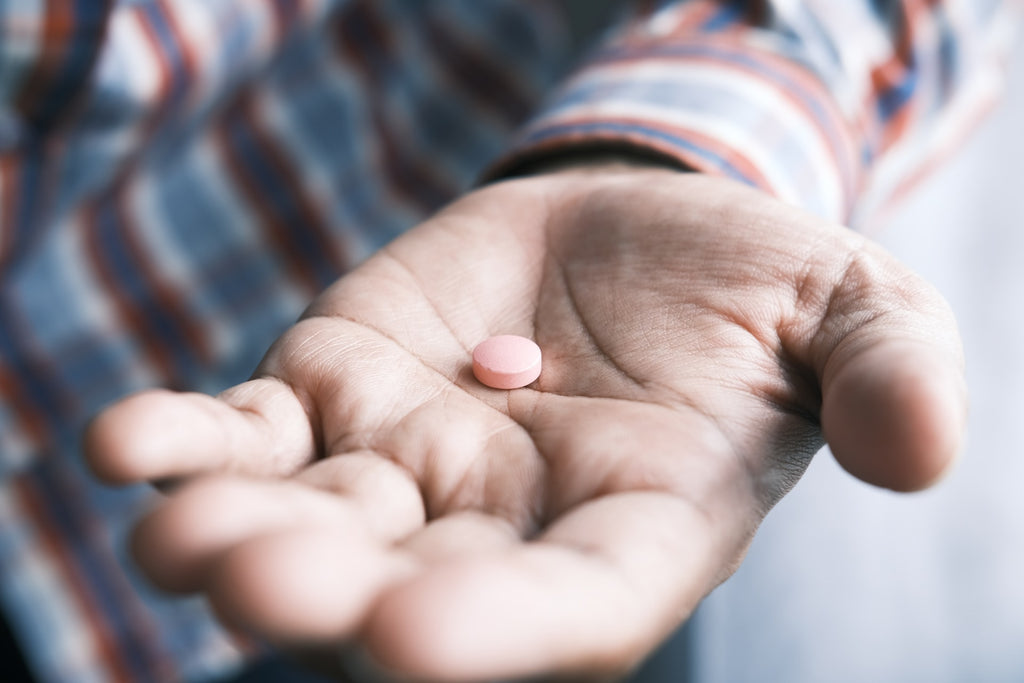
A Complete Guide to Getting an Oral Minoxidil Prescription
Many struggle with hair loss, significantly impacting their self-confidence and overall quality of life. One possible solution for hair growth is oral minoxidil, a prescription medication proven effective in promoting hair growth. In this guide, we will discuss obtaining an oral minoxidil prescription, its benefits, and other important information you need to know before starting this treatment.
Understanding Oral Minoxidil
Oral minoxidil is primarily used to treat hypertension (high blood pressure). However, it has also been found to be an effective treatment for hair loss. It comes in tablet form and is available in different dosages. Minoxidil increases blood flow to the scalp, promoting hair growth and thickness. It is important to note that oral minoxidil is a prescription medication and should only be taken under a doctor's or dermatologist's guidance.
How Does It Work?
Oral minoxidil opens up the blood vessels in the body, increasing blood flow to the scalp. This improved blood flow promotes hair growth and thickness. Minoxidil is believed to work by widening the blood vessels, allowing more oxygen and nutrients to reach the hair follicles. This, in turn, stimulates the hair follicles and encourages hair growth. Results from using oral minoxidil are not immediate and can take up to six months to be noticeable.
Who Gives the Prescription?
Oral minoxidil is a prescription medication, which means a licensed healthcare professional can only prescribe it. This can include doctors, dermatologists, or other healthcare providers who are licensed to prescribe medications. Finding a healthcare provider experienced in hair loss who can guide and support you during your treatment is important.
How to Get a Prescription?
If you are experiencing hair loss and think oral minoxidil may be a suitable treatment option, consult a doctor or dermatologist. During your consultation, the doctor will evaluate your medical history and hair loss to determine whether oral minoxidil is the right treatment for you. If the doctor concludes oral minoxidil is appropriate, they will prescribe it.
Does Insurance Cover It?
Whether or not oral minoxidil is covered by insurance depends on the individual's insurance plan. Some insurance plans may cover the medication, while others may require a co-pay or may not cover it at all. It is important to check with your insurance provider to determine whether or not the medication is covered and the cost.
Conclusion
Oral minoxidil can be an effective treatment for hair loss, but it is important to consult a doctor or dermatologist before starting treatment. Getting an oral minoxidil prescription requires a visit to a healthcare professional who is experienced in treating hair loss and can evaluate the individual's medical history to determine whether or not the medication is appropriate. Following the doctor's instructions carefully and reporting any side effects or concerns during treatment is important. With guidance and support, oral minoxidil can help individuals achieve thicker, healthier hair and improve their confidence and self-esteem.
Discover the power of Tugain 10's minoxidil products to combat hair loss and promote growth. Don't let thinning hair hold you back – take control today and experience the confidence that comes with a fuller, healthier head of hair. Start your journey with Tugain 10 now!
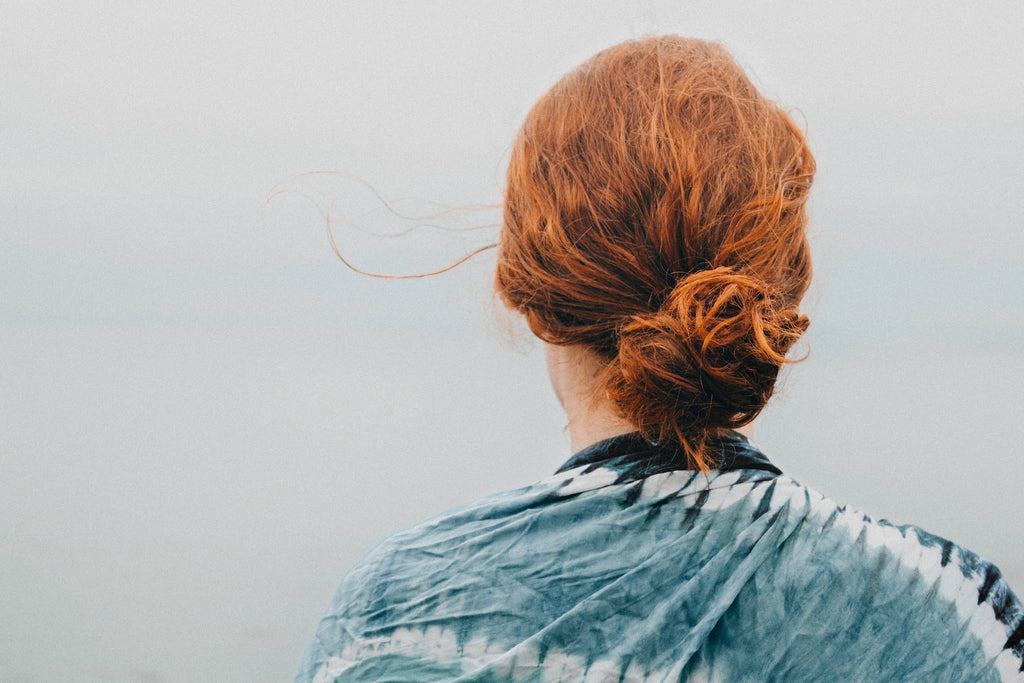
Usage Instructions of Minoxidil to Stimulate Hair Regrowth
Minoxidil is a medication used for many years to treat hair loss. It is a topical solution applied to the scalp and increases blood flow to hair follicles, stimulating hair growth. It is important to use minoxidil correctly to get the best results. In this article, we will discuss the guidelines for using minoxidil, including how and when to apply it.
What Is Minoxidil?
Minoxidil was originally developed as a medication to treat high blood pressure. However, it was found to have the side effect of promoting hair growth. Today, minoxidil is used primarily for hair loss treatment and is available as a topical solution applied directly to the scalp.
How to Apply Minoxidil
When applying minoxidil, it is important to follow the instructions provided by your doctor or pharmacist. Generally, you will apply a small amount of the solution to the affected area of the scalp twice a day. The solution should be applied to dry hair and scalp. It is important to avoid getting the solution on other parts of the body, as it can cause unwanted hair growth.
Before applying the solution:
- Make sure your hands are clean and dry.
- Using the dropper provided, apply the solution to the affected area of the scalp.
- Gently massage the solution into the scalp using your fingertips.
It is important to use the solution regularly, as directed by your doctor or pharmacist. Do not double up on the next dose if you miss a dose. Simply apply the next dose at the regularly scheduled time.
When to Apply Minoxidil
Minoxidil should be applied twice daily, ideally in the morning and at night. The solution should be applied to dry hair and scalp, and you should wait at least four hours before washing your hair or getting it wet. This allows the solution to be absorbed into the scalp, stimulating hair growth.
It is important to be consistent with your application of minoxidil. It may take several months of regular use before you start to see results. If you stop using the medication, any hair that has been regrown may be lost.
Potential Side Effects of Minoxidil
Like any medication, minoxidil can cause side effects. Some common side effects include itching, redness, and scalp irritation. These side effects are usually mild and go away on their own.
In rare cases, minoxidil can cause more serious side effects, such as chest pain, irregular heartbeat, or difficulty breathing. If you experience any of these symptoms, seek medical attention immediately.
It is also possible for minoxidil to cause unwanted hair growth on other parts of the body, such as the face or hands. If this occurs, speak to your doctor or pharmacist about adjusting your dose or switching to a different medication.
Precautions for Using Minoxidil
There are certain precautions you should take when using minoxidil.
- Avoid getting the solution on other body parts, which can cause unwanted hair growth. If you accidentally get the solution on your face, hands, or other body parts, wash it off immediately.
- Do not use minoxidil on a sunburned scalp or irritated or broken skin. This can increase the risk of side effects.
- If pregnant or breastfeeding, speak to your doctor before using minoxidil. While there is no evidence that minoxidil is harmful during pregnancy or breastfeeding, it is always best to err on the side of caution.
Conclusion
Minoxidil is a safe and effective medication for treating hair loss. When used correctly, it can stimulate hair growth and help you achieve a fuller, thicker head of hair. However, it is important to use minoxidil as directed by your doctor or pharmacist and to be consistent with your application. If you experience any side effects or have any concerns about using minoxidil, speak to your doctor or pharmacist.
Tugain 10 is your source for the best over-the-counter hair loss treatment products. We provide 12.5 percent Minoxidil and Tugain, and Tugain ten percent Foam Minoxidil, among other products that are effective at combating hair loss and thinning. If you’re looking for Minoxidil products for hair growth, look no further! Shop online now!

Minoxidil for Your Facial Hair: What Do You Need to Know?
Minoxidil is a medication that has been used for decades to treat hair loss on the scalp. However, in recent years, it has gained popularity as a treatment option for facial hair growth. While the use of minoxidil for facial hair is not always effective, many people have reported success using it. If you are considering using minoxidil for facial hair, here are things you need to know:
Minoxidil Is Not a Miracle Cure
Minoxidil can undoubtedly help promote hair growth, but it is not a magic solution. Results can take several months to appear, and some people may not see any improvement at all. It is essential to have realistic expectations and understand that minoxidil is not a guaranteed fix.
Minoxidil Is Not Just for Men
While facial hair growth is often associated with men, women can also use minoxidil to promote hair growth. However, women should be aware that excessive hair growth on the face can be a symptom of an underlying medical condition and should be evaluated by a healthcare provider before using minoxidil.
Minoxidil Is Not for Everyone
Minoxidil is not recommended for individuals under 18 years old, pregnant or breastfeeding women or people with certain medical conditions. Before using minoxidil, it is important to consult with a healthcare provider to ensure that it is safe for you to use.
Minoxidil Is a Topical Solution
Minoxidil is applied directly to the skin and absorbs into the hair follicles to promote hair growth. It is crucial to follow the instructions carefully and avoid using too much, as this can cause side effects like skin irritation.
Minoxidil May Cause Side Effects
While many people use minoxidil with no issues, it can cause side effects in some individuals. Common side effects include itching, redness, and dryness of the skin. In rare cases, minoxidil can cause more severe side effects like chest pain or difficulty breathing. If you experience any side effects while using minoxidil, stop using it and contact a healthcare provider.
Minoxidil Is Not Permanent
Once you stop using minoxidil, the hair growth it promotes will eventually stop. This means that if you want to maintain your new facial hair, you will need to continue using minoxidil indefinitely.
Minoxidil Is Not a Replacement for Other Grooming Habits
While minoxidil can help promote hair growth, it is not a substitute for other grooming habits. You will still need to trim and shape your facial hair and keep it clean and moisturized.
Minoxidil Is Not the Only Option
While minoxidil is a popular option for promoting facial hair growth, it is not the only one. There are many natural remedies and dietary changes that can also help promote hair growth. Additionally, if you are experiencing hair loss or thinning, there may be underlying medical issues that need to be addressed.
Minoxidil Is Not a Decision to Take Lightly
Before deciding to use minoxidil for facial hair growth, it is essential to do your research and consult with a healthcare provider. While it can be effective for some people, it is not without risks and should be used with caution.
Final Thoughts
In conclusion, minoxidil can be a helpful tool for promoting facial hair growth, but it is not a magic solution. It requires consistency and patience and may not work for everyone. Before using minoxidil, it is vital to understand the risks and benefits and consult with a healthcare provider to ensure that it is safe for you to use.
Are you looking for minoxidil for beard growth? Check out Tugain 10. We offer a wide range of minoxidil products. Shop today!
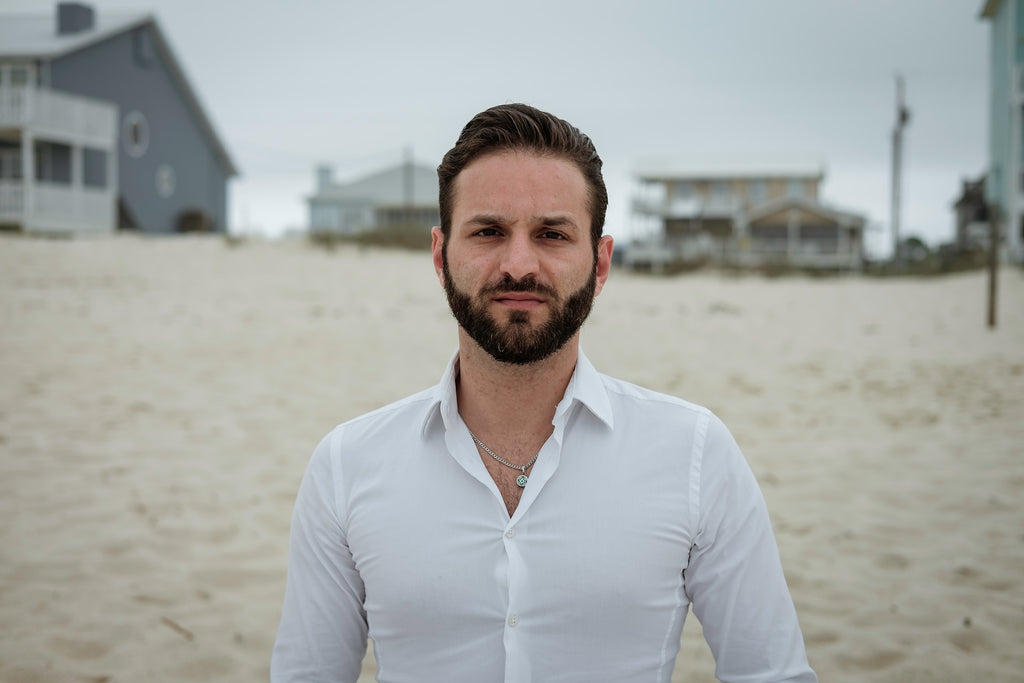
Minoxidil (Rogaine)—How Does It Promote Beard Growth?
Growing a beard can be long and difficult, but you can speed up the process with the right product. Minoxidil, commonly known as Rogaine, is a drug that helps stimulate hair growth and can be used to help grow a thicker and fuller beard.
This article will provide information on using Minoxidil to get the best results when growing a beard. It will discuss the proper application of the product, potential side effects, and other tips to enhance beard growth. By following these steps, you can get the beard you've always wanted in no time.
What Is Minoxidil?
The main element in hair growth products like Rogaine is Minoxidil. However, early experiments discovered hair growth as a detrimental side effect, and it was initially used to treat high blood pressure. The Food and Drug Administration (FDA) approved it as a topical treatment for scalp hair growth under the trade name Rogaine in the 1980s based on additional studies.
How Exactly Does Minoxidil Function?
The precise mechanism via which Minoxidil acts is presently the subject of scientific discussion. It is explicitly stated that Rogaine can grow and rejuvenate hair follicles. Hence, thicker hair develops more normally. Yet, some contend that increased blood flow and dilation of the scalp's blood vessels work.
Some argue that it lengthens the development phase by increasing the follicle's ATP enzyme. It has been demonstrated to be among the most effective topical therapies for halting hair loss, whatever the cause. As with any treatment of this nature, individual results will unavoidably differ depending on the characteristics of the thin or missing hair.
How Soon Does Minoxidil Start to Work?
Although beard Minoxidil begins to work immediately, noticeable changes won't occur for three to six months, with the best visual effects appearing after a year. Use of the complete time frame is required at all times.
When Is Minoxidil Recommended for Use?
It's crucial to adhere to the directions precisely because they may change depending on the brand and solution strength of the product you purchase. However, the typical advice is to use topical Minoxidil once or twice daily. Use the recommended amount for your skin and hair to dry them. In the following hours, avoid having your hair wet, and ensure the product is dehydrated before styling or going to bed.
Is Using Minoxidil on Your Beard Okay?
Applying Minoxidil to a beard is off-label because it is only approved for use on the head. This is why companies like Rogaine explicitly state that their products should only be applied to the scalp. However, a study on the effects of Minoxidil on beard growth published in the Journal of Dermatology found that using a 3% solution on the face did not seem to have many adverse effects.
Before using Minoxidil for beard development, it is advised to be aware of the side effects, which include skin irritation, itching, and dryness. It is harmless for the face, according to a large body of anecdotal evidence, but use caution when applying it to avoid getting it in your mouth or eyes.
How Should Minoxidil Be Applied to a Beard?
First, wash and dry your face. Use a cleanser with a neutral PH to help lessen any irritation. Apply the recommended skincare product to the desired growth area and gently massage it into the skin's surface. Before adding any other products, like a moisturizer or sunscreen, let it absorb.
How Much Minoxidil Should You Take to Grow a Beard?
You must regularly and consistently apply 12.5% Minoxidil to your beard for the finest results for six to 24 months. Since the hair growth cycle requires time, irregular product use won't help.
Can Minoxidil Help Mustache Growth?
Minoxidil can help with mustache growth, like how it helps with beard growth. Again, there haven't been any formal studies done to back this up, but there is a wealth of anecdotal evidence from successful men. Please pay special attention as you apply it to avoid leaking into your mouth.
Conclusion
Growing a beard is safe and efficient when using Minoxidil (Rogaine). Significantly, a healthy lifestyle, including a balanced diet and frequent exercise, is necessary to function at its best. It should also be used correctly and consistently for the best results. When used correctly and consistently, Minoxidil can help promote facial hair growth. However, results can take several weeks to appear and may vary from person to person. It is important to remember to be patient and to consult your doctor if you have any questions or concerns.
Tugain 10 provides 12.5% Minoxidil, Tugain 10% Liquid, and Tugain Foam 10% products. Buy beard Minoxidil today!
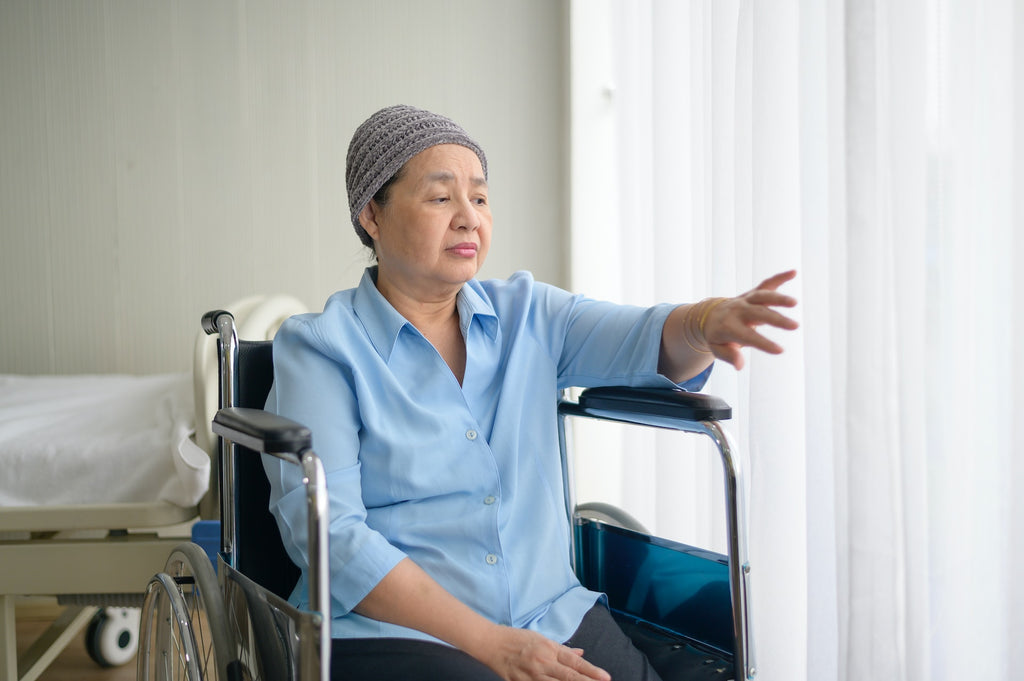
A Guide to Applying Minoxidil Foam for Hair Loss Treatment
Minoxidil foam is a popular over-the-counter medication used to treat hair loss in men and women. It was originally developed as a medication to treat high blood pressure, but it was found to have a side effect of increasing hair growth. In this article, you will learn how to properly apply minoxidil foam to maximize its effectiveness. Read on.
Preparation
Before applying minoxidil foam, it is important to wash and dry your scalp thoroughly. This will ensure that the foam is able to penetrate the scalp and reach the hair follicles. Use a gentle shampoo and avoid using any hair products, such as gels or hairspray, that can build up on the scalp.
It is also essential to make sure that your hair is completely dry before applying the foam. Wet hair can dilute the medication and reduce its effectiveness. If you have long hair, it may be helpful to tie it back or clip it out of the way to make it easier to apply the foam.
Application
Once your scalp is clean and dry, it is time to apply the minoxidil foam. Follow these steps:
Step 1: Part your hair
Using a comb, part your hair in the area where you want to apply the minoxidil foam. This will help ensure that the foam is evenly distributed. It is vital to apply the foam directly to the scalp and not just the hair. Parting the hair will help ensure that the foam reaches the scalp.
Step 2: Dispense the foam
Depress the nozzle of the minoxidil foam canister to dispense the foam. Use about half a capful of foam for each application. It is important not to use too much foam, as this can make it difficult to apply and may reduce its effectiveness.
Step 3: Apply the foam
With your fingertips, gently massage it into your scalp in the area where you have parted your hair. Be sure to apply the foam directly to the scalp and not just the hair. Massaging the foam into the scalp will help ensure that it is evenly distributed and reaches the hair follicles.
Step 4: Repeat
Repeat steps 2 and 3 until you have covered the entire area of your scalp that you want to treat. It is crucial to make sure that you cover all of the areas where you are experiencing hair loss. This may include the crown of the head, the hairline, or other areas where hair is thinning.
Step 5: Wash your hands
After applying the minoxidil foam, wash your hands thoroughly with soap and water. This will help prevent the medication from getting on other parts of your body and potentially causing unwanted hair growth.
Frequency of Use
Minoxidil foam should be used twice a day for the best results. It is important to use it consistently and not miss any applications. If you forget to apply it at the scheduled time, apply it as soon as you remember. It may take several months of consistent use before you start to see results, so it is essential to be patient and stick with the treatment.
Side Effects
While minoxidil foam is generally safe and effective, it can cause some side effects. These may include itching, redness, and irritation of the scalp. If you experience any of these side effects, stop using the product and consult your doctor.
Takeaway
Minoxidil foam is an effective treatment for hair loss that can be easily applied at home. By following the above simple steps, you can maximize its effectiveness and achieve the best possible results.
Remember to use it consistently and be patient, as it may take several months to see results. If you have any concerns or questions, consult your doctor. They can help you determine if minoxidil foam is right for you and provide guidance on how to use it safely and effectively.
Are you on the lookout for minoxidil foam? Check out Tugain 10, offering a wide range of hair regrowth products. Shop now!
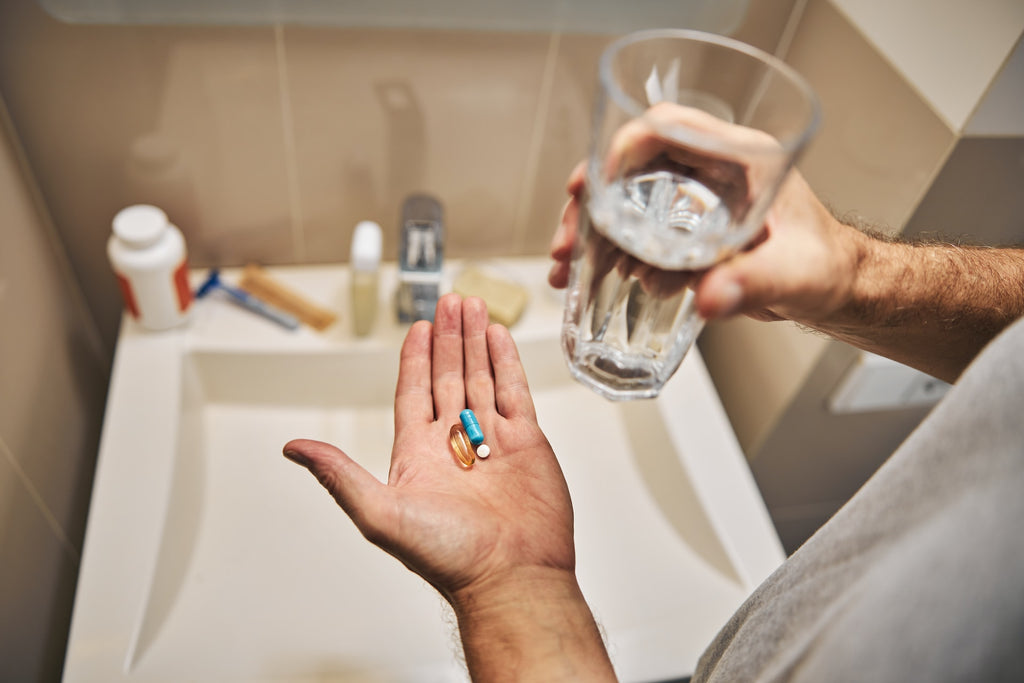
Thicker Mane, No Pain: Minoxidil Proper Use
If you're unhappy with your thinning hair, you may wonder what options are available to help you achieve a thicker mane. One of the most popular hair loss treatments is minoxidil, a topical solution that you can apply directly to the scalp.
However, like any medication, using minoxidil properly is important to get the best results and avoid potential side effects. So before you buy minoxidil, take a closer look at how to use it correctly to achieve a thicker mane with no pain.
What Is Minoxidil?
Minoxidil is a medication that was originally developed to treat high blood pressure. However, researchers discovered it also had the unexpected side effect of promoting hair growth. Today, minoxidil is used primarily for androgenetic alopecia, the most common form of hair loss in both men and women.
This topical medication works by widening the blood vessels in the scalp, which increases blood flow to the hair follicles. This delivers more oxygen and nutrients to the follicles, stimulating hair growth. Furthermore, minoxidil extends the hair cycle's anagen (growth) phase, leading to stronger hair.
Proper Use of Minoxidil
If you've decided to buy minoxidil and try it to promote hair growth, it's important to use it properly to get the best results. Here are some tips to remember:
1. Choose the Right Strength
Minoxidil comes in two strengths: 2% and 5%. The 2% solution is recommended for women, while the 5% is recommended for men. However, some women may also benefit from using the 5% solution, particularly if they have more advanced hair loss.
2. Apply to a Dry Scalp Twice a Day
Before applying minoxidil, ensure your scalp is completely dry, preferably at least four hours after washing your hair before applying the solution. If your hair is damp, the minoxidil may not be absorbed properly.
3. Allow the Solution to Dry
After applying the minoxidil solution, allow it to dry completely before bed or use styling products on your hair. This will help the medication be absorbed properly and not rub off your pillow or other surfaces.
4. Don't Over-apply
While applying minoxidil consistently is important, you must handle it appropriately. Using too much can lead to increased hair loss. Stick to the recommended amount, which is 1 ml for the 2% solution and 1.5 ml for the 5% solution.
5. Stick to a Consistent Routine
For best results, apply minoxidil consistently, twice a day, every day. Maintaining a consistent routine is important, as stopping or reducing the frequency of application can reverse any hair regrowth you've experienced.
Possible Side Effects
While minoxidil is generally considered safe, there are some potential side effects to be aware of. These can include:
- Scalp irritation or itching
- Dryness or flaking of the scalp
- Increased hair loss (this is usually temporary and occurs during the first few weeks of treatment)
- Unwanted hair growth on other parts of the body (such as the face or hands)
If you experience these side effects, stop using minoxidil and consult your doctor.
Final Thoughts
Minoxidil can be an effective treatment for hair loss, but it's important to use it properly to get the best results. Be sure to choose the right strength and consult your doctor before you buy minoxidil. With proper use, you can achieve significant hair regrowth and improve your confidence in your appearance.
Tugain 10 is a reliable store where you can buy minoxidil and other hair loss treatment products at affordable prices. With our easy-to-use website and helpful customer service, you can find the right solution for your hair loss and start your journey toward regrowth and improved confidence. Shop from us today!
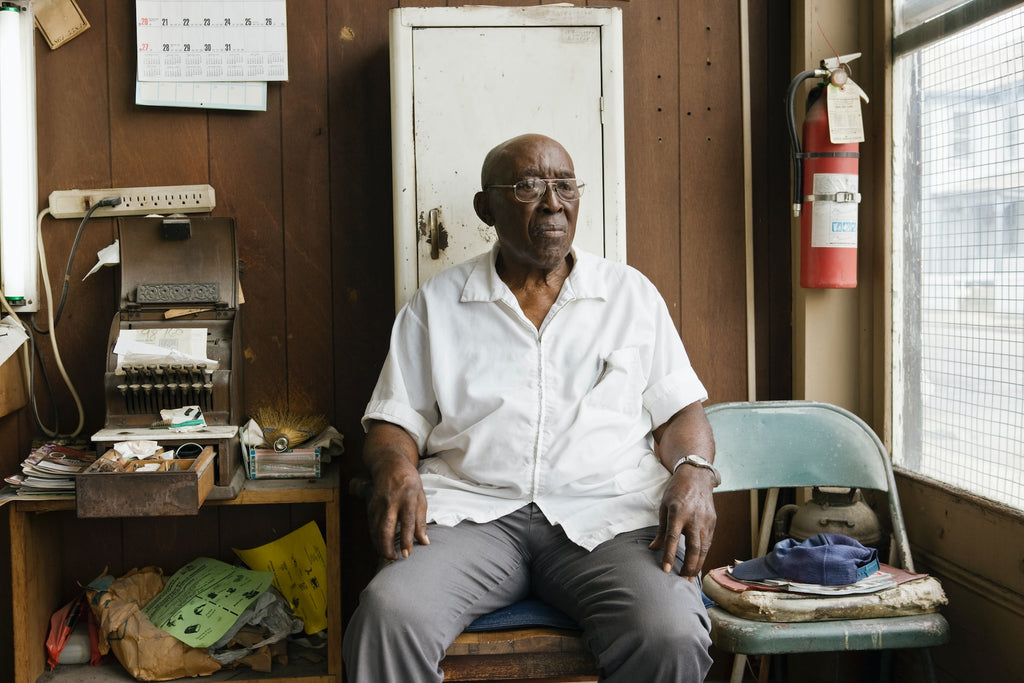
Debunking 7 Myths & Misconceptions on Male Pattern Baldness
Male pattern baldness, also known as androgenetic alopecia, is a common condition that affects millions of men worldwide. It is characterized by the gradual thinning and loss of hair on the scalp, often beginning at the temples and crown. There are several myths and misconceptions surrounding male pattern baldness, many of which are passed down through generations or spread through misinformation.
In this blog, we will debunk seven of the most common myths and misconceptions about male pattern baldness to provide a clearer understanding of this condition and how it should be managed.
Myth 1: Male Pattern Baldness Is the Fault of Your Parents
One common misconception is that male pattern baldness is solely the result of your genetics, specifically inherited from your mother's side of the family. While genetics play a significant role in determining your likelihood of experiencing hair loss, it is not the only factor.
Both your mother's and father's genes contribute to your risk of developing male pattern baldness, and environmental factors such as stress and lifestyle choices can also play a part.
Myth 2: Wearing Hats Lead To Baldness
Many people believe that wearing hats frequently can cause or exacerbate hair loss. However, this myth is not supported by scientific evidence. Wearing a hat does not directly cause hair loss, but it is essential to ensure that your hat is clean and fits well to avoid creating an unhealthy environment for your scalp.
Myth 3: Hair Restoration Treatments Do Not Work
Some people are skeptical about the effectiveness of hair restoration treatments. Still, there are several FDA-approved treatments available that have been proven to be effective in treating male pattern baldness.
These include medications such as minoxidil and finasteride, as well as hair transplant surgery. It is essential to consult with a dermatologist or hair restoration specialist to determine the best course of action for your specific situation.
Myth 4: Baldness Can Come From Too Much Sun Exposure
While excessive sun exposure can damage your hair and scalp, leading to dryness and brittleness, it does not directly cause male pattern baldness. However, it is essential to protect your scalp from the sun's harmful UV rays by wearing a hat or using sunscreen to maintain good scalp health.
Myth 5: Hair Loss Happens When You Have Too Much Sun Exposure
As mentioned earlier, sun exposure does not directly cause hair loss. However, overexposure to the sun can lead to hair damage, making it more susceptible to breakage and thinning. It is essential to take care of your hair and scalp by protecting them from the sun and using gentle hair care products.
Myth 6: Stress Worsens Male Pattern Baldness
While stress can contribute to temporary hair loss known as telogen effluvium, it is not directly responsible for male pattern baldness. However, managing stress is essential for overall health, including the health of your hair and scalp. Incorporating stress-reduction techniques such as exercise, meditation, or therapy can help maintain your well-being and minimize hair loss.
Myth 7: Natural Supplements Can Help with Hair Growth
There is no shortage of natural supplements and remedies that claim to help with hair growth and prevent hair loss. While some supplements may provide essential nutrients for hair health, such as biotin and vitamin D, their effectiveness in treating male pattern baldness has not been scientifically proven.
It is essential to discuss any supplements or natural remedies with your doctor or a hair restoration specialist to ensure they will not interfere with other medications or treatments.
Final Thoughts
Male pattern baldness is a complex condition with various contributing factors, including genetics and environmental influences. It is essential to be well-informed and consult with a healthcare professional to determine the most effective course of action for your specific situation.
If you want to try out minoxidil for faster hair growth, you should consider Tugain 10. Our products contain 12.5% minoxidil and 10% tugain to help stimulate hair growth for men. Order from our store now!

